Revisiting 2012- The Year that has been
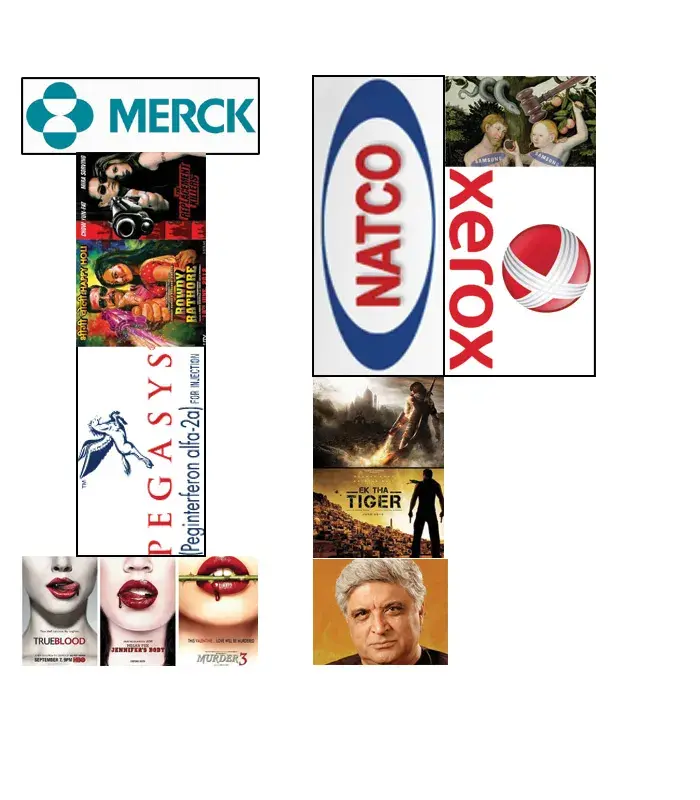
A successful stint at London Olympics and a dismal performance in Cricket, Yuvraj’s smashing comeback and Sachin’s modest adieu, Kejriwal’s relentless attempts and Modi’s effortless victory, Banerjee’s withdrawal and Mukherjee’s arrival, bad time for the “KING” of good times and testing times for the nation’s son-in-law, reformation in the FDI policy and retail revolution, Obama’s stupendous triumph in “Oppa Gangnam Style”, Satyamev Jayate’s (Truth Alone Prevails) showcasing hard hitting reality and nation demanding justice for violation of female’s modesty, twenty twelve had it all. Now when we stand at the threshold, realizing the transitory nature of the fleeting time and all set to bid adieu to one year and embrace the other IPConnects revisit the past to present a glimpse of the most fascinating, enthralling, intriguing, provoking and debatable news from the word of intellectual property.
Read this special edition of ours to know the winner of the coveted title “IP Connect News of 2K12”
Patents
If you won’t work your Patent…I will…
President Barack Obama asked Americans to study to keep “Job-hungry” Indian and Chinese at bay, Indian Patent Office sends a message on similar lines to multinational patent holders, particularly patentees in respect of pharmaceuticals, the message being “work your patents to keep generic-hungry Indians at bay”. While the Indian IP world was brooding over the visionary Controller’s retirement, Mr. P. H. Kurian seems to have hit a six of the last ball. First time ever in the one hundred and one year old history of Indian Patent System, a compulsory license (CL) was granted by the Patent Office. The CL was granted to Natco Pharma Ltd. for producing generic version of Bayer Corporations’s patented medicine Nexavar, used in the treatment of Liver and Kidney cancer. It was more than a mere coincidence that the order (dated March 9, 2012) was released on the last day of Mr. P.H. Kurian’s tenure as the Controller.

The Controller decided against Bayer on all the three grounds enlisted in the Patents Act for the grant of CL (reasonable requirements of the public not being satisfied; non-availability to the public at a reasonably affordable price, and the patented invention not being worked in the territory of India). While the multinational giant was selling the drug at INR 2.80 lakh for a month’s course, Natco promised to make available the same at a price of about 3 % (INR 8800) of what was charged by Bayer. Natco was directed to pay 6 percent of the net sales of the drug as royalty to Bayer. Among other important terms and condition of the non assignable, non exclusive license were directions to Natco to manufacture the patented drug only at their own manufacturing facility, selling the drug only within the Indian Territory and supplying the patented drug to at least 600 needy and deserving patients per year free of cost.
patented drug to at least 600 needy and deserving patients per year free of cost.
Et tu IPAB…
Aggrieved by the Controller’s decision, Bayer immediately moved to the Intellectual Property Appellate Board (IPAB) alleging that the grant of CL was illegal and unsustainable. The Board rejected Bayer’s appeal holding that if stay was granted, it would definitely jeopardize the interest of the public who need the drug at the later stage of the disease. It further held that the right of access to affordable medicine was as much a matter of right to dignity of the patients and to grant stay at this juncture would really affect them.
Cipla and Bayer ….Brothers in arms ???
One interesting fact of the case is Bayer’s insistence that the availability of the drug in India was considerably enhanced due to its sale by Cipla. It argued that the reasonable requirements of the public was being fulfilled by Bayer and Cipla cumulatively currently and would be fulfilled in future as well. [We may mention here that Cipla was selling the generic version of the patented drug as Soranib in the market against which infringement suit was filed by Bayer in the Delhi High Court]
IPAB answered Bayer’s stance in this regard with following observation:
“…we are unable to understand whether, according to the appellant, CIPLA rides with them or CIPLA is its rival, whether CIPLA is a friend or foe. When the grounds of section 84(1) (a) and 84(1) (b) are raised, the appellant wants us to take into the reckoning CIPLA’s presence. CIPLA is satisfying the reasonable requirement of the public and therefore, the Board should not look at the ground under sub-section (1) (a) and CIPLA’s product is available to the public at a reasonably affordable price and so, the Board should not look at the ground under sub-section (1) (b). Therefore, for these two grounds of attack, the appellant takes the presence of CIPLA along with it, but for the ground of attack under section 84(1) (c), the appellant takes a stand that CIPLA is its enemy which prevented the appellant from entering the market. We cannot accept this mutually inconsistent stand.”
Pharma Patents: to be, or not to be: that is the question
While the generic drug manufacturing industry in India celebrated the grant of first Compulsory License, it was criticized worldwide by innovating R&D companies as well as industrial lobbies. Bayer, in its arguments before the Patent Office, had defended the higher price of the drug stating that innovation based products though cost a price over generics, but pays for the pipeline (i.e. the future innovation) and competition not to mention the failed projects, which is about 75% of the total R & D cost.
But there was more in the offing for the pharmaceutical industry:
Pfizer’s plight: Indian Patent Office revoked Pfizer’s patent for ), a drug used to treat a type of kidney cancer in a post grant opposition proceeding initiated by Cipla. The ground for the revocation of the patent was lack of inventive step for the drug as claimed by the company. The drug costs roughly Rs1.96 lakh for a 45-day treatment, or Rs 4,357 per 25 mg capsule. Pfizer reportedly would be challenging the Controller’s decision in the IPAB (September 24, 2012)
Avesthagen’s jamun based drug patent revoked by government: The Government of India (GOI), in one of its own kind decision, revoked Avesthagen’s patent for a composition consisting of jamun, lavangpatti and chundun to be used for treatment of diabetes. The patent was revoked under Section 66 of the Patent Act that empowers the Central Government to revoke the patent in public interest. The said provision had been used only once before to revoke the patent given to a US firm for developing cotton cells by tissue culture. The GOI had stated in the revocation proceedings that the use of Jamun for the treatment of diabetes had been long known to India and thus the extract of Jamun will also give effective therapeutic activity for diabetes. Thus, this patent infringes on Traditional knowledge of India. Avesthagen on the other hand had argued that its patent might be a traditional knowledge in the sense that the component parts were used for treating diabetes but that its combination shows an aggressive effect was unknown. Avesthagen claims were obviously rebutted by the Government. (Gazette No. 2085 Notification S.O. 2517 (E) dated October 18, 2012)
Roche’s rights revoked: In response to the petition filed by a patients’ group, IPAB revoked the patent granted to Roche for Pegasys (pegylated interferon alfa-2a), a drug used in the treatment of Hepatitis C. It was held that Roche did not provide any evidence, in specification or even otherwise, to prove that Pegasys has any enhanced efficacy over the original molecule. The patent had historical significance as it was the first product patent for a medicine in India (in 2006) under the newly adopted product patent regime for medicines in 2005. Reportedly the patients with chronic hepatitis C, needing a six-month course of treatment had to purchase the patented drug at a cost of approximately Rs.4,36,000. (November 2, 2012 OA/8/2009/PT/CH)
No appeal could save Gefitinib: IPAB dismissed British drugmaker AstraZeneca’s petition challenging an earlier ruling that had led to refusal of patent protection for Gefitinib, AstraZenca’s cancer-fighting drug. Gefitinib related to “quinazoline derivative” of Formula I to be used for treatment of cancer. Pre grant opposition against the same was initiated by Natco Pharma Ltd and G.M. Pharma Ltd which were accepted by the Controller and grant of patent to AstraZeneca was refused. Later AstraZeneca filed review petition against both the orders of the Controller which were dismissed by the Patent Office. Thereafter AstraZeneca filed the appeal in the IPAB against these orders. IPAB however held that the Controller was right in testing the review petition under Order 47 Rule 1 of the CPC and noted that “…while observing that the Board had already taken a view that no appeal shall lie against the Controller’s order passed in a review petition, even on merits, the appeal against the review petition fails and is dismissed. (November 26, 2012 OA/17/2012/PT/DEL)
No mercy for Merck: The Patent Office revoked patent (titled An aerosol suspension formulation for inhalation) for an asthma drug held by U.S.-based Merck & Co after the post-grant opposition was filed against it by Cipla. The patent application was initially filed by Schering Corporation February, 2004. The entity was later acquired by Merck & Co. The patent for the drug comprising mometasone furoate, formoterol and heptaflouropropane was granted in 2011. The Controller while revoking the patent held that claim 1 either on individual parameters or in its entirety lacked inventive step and consequently the claims dependent on the claim 1 were not inventive and that the sole process claim in its entirety was not inventive as the said claim does not describe any inventive feature. Further it was held that the descriptive portion of the specification does not throw any light on the carrier itself and hence based on the arguments during the hearing which were made around the presence or absence of a carrier was considered to be insufficiently disclosed. (December 10, 2012)
APPLE remained the forbidden fruit as SAMSUNG pays for “biting” its IP…
The U.S. District Court (Northern District of California (San Jose)) decided in favor of Apple in the famous Apple vs. Samsung tussle. It all started when Apple Inc. brought a utility and design patent infringement case against Samsung Electronics Co. Ltd in April 2011 for infringement of its three utility patents (US Patent No. 7,469,381 relating to “list scrolling and document translation, scaling and rotation on a touch-screen display”, US Patent No. 7,844,915 relating to an “application for programming interfaces for scrolling operations” (zooming, bounce-back on scrolling, etc) and US Patent No. 7,864,163 relating to “method for displaying at least a portion of a structured electronic document”) as well as four design patents. The main design patent at issue was the ‘889 design patent which claimed “the ornamental design for an electronic device” with depictions of the rounded cornered tablet. Samsung counterclaimed for infringement of six of its own patents in June 2011. The lawsuit happened after meetings between the two companies proved to be futile. After a three week trial, a jury of nine members gave its verdict. They found that Samsung had infringed all Apple’s patents and design patents, except the famous ‘889 design patent. They also found that Apple had not infringed any of Samsung’s patents. The Jury further noted that Samsung’s infringement of the patents was willful in that Samsung knew or should have known that its actions constituted infringement of Apple’s three patents and directed Samsung to pay Apple a total of $1.05 billion in damages. Although less than the original $2.75 billion Apple requested, the $1.05 billion damages award represents the fourth largest jury award in a patent case ever.
Pureit Patent revoked – Killing bacteria and viruses was not enough to prevent patent from being killed
IPAB (vide its decision dated June 12, 2012) revoked the patent granted to Hindustan Unilever limited (HUL) on an application for revocation bought forward by Tata Chemicals Ltd. While the “Pureit” patent had also other aspects (including novelty and non-obviousness) to it that in totality led to its revocation, what made it a noteworthy case is that for the first time ever a patent was revoked by IPAB for not complying with Section 8 of the Indian Patent Act. [Section 8 mandates every applicant to furnish information regarding prosecution of the claimed invention outside India to the Indian Patent Office.]
It is worth mentioning that even though the patent was revoked by IPAB, the HUL product has a total of 30 non-Indian patents associated with it.
COPYRIGHTS
After the struggle for last two years, finally 17th and 22nd May 2012 were marked as the red – letter day in the history of the Copyright Law in India when both the Rajya Sabha and Lok Sabha passed the Copyright (Amendment) Bill, 2010 on the respective dates. These amendments had set landmarks not only in the Copyright Law but also in the whole IP world. It has far reaching implications in the music and film industry. The Copyright (Amendment) Act 2012, introduced amendments to harmonize the Copyright Act, 1957 with WCT and WPPT. Some of the significant ‘amendments at a glance’ are:
- In relation to a Cinematograph Film the author means the producer and the director also. Earlier it was only for producers. The term for copyright protection for the directors would be 70 years.
- Independent rights to the lyricist and the composers.
- Physically challenged persons would have access to the copyright materials in special formats, provided that they should not infringe the copyright of other authors.
- Photographic works to be protected for ‘life plus 60 years’ (earlier it was only for 60 years).
- Statutory License for Cover Versions. (Cover Version refers to a new performance or recording of an existing song).
- Amendments to Copyright Act, 1957 at par with the global Internet Laws.
- Performer’s rights were expanded and they were allowed to make the recordings of their performances and to reproduce it in any version.
- Statutory licenses to broadcasting organization to access any literary, musical works and sound recordings and to pay appropriate remuneration to Copyright holder as fixed by the Copyright Board.
The HRD Minister Kapil Sibal while passing the Bill in Lok Sabha said that the main aim to pass the bill is that the bill will do justice to those professionals who will create songs for Bollywood movies.
After having received the assent of the President on 7th June, 2012, the Copyright (Amendment) Act, 2012 was published as corresponding Act in the Gazette of India, Extraordinary, Part-II, Section-1, dated the 8th June, 2012.
What would you prefer …“Shauq” or “Swad”? Pan Masala Manufacturers fight over slogan
The High Court of Delhi dealt with an interesting case to determine whether the advertising slogans and/or phrases are copyrightable or not. Both the plaintiff Godfrey Phillips India Ltd and defendant Dharampal Satyapal Ltd. were engaged in the similar trade of manufacturing, marketing, distribution and sale of, inter alia, “Pan Masala”. While Godfrey launched its product “Pan Vilas Pan Masala” sometime in the beginning of the year 2010 and have been using the advertising slogan “Shauq Badi Cheez hai”, the Dharampal Satyapal (DS) were using the slogan “Swad Badi Cheez Hai” for their product “Tulsi Sada”. Godfrey alleged that DS had copied their advertising slogan and brought the suit for permanent injunction against them alleging infringement of copyright, passing off, unfair competition and dilution.
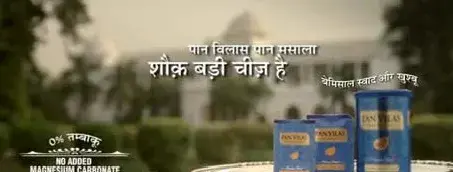
While the learned Judge agreed that the registration of copyright was not compulsory for the purpose of enforcing copyright by a party, he held that as the slogan “Shauq Badi Cheez Hai” is combination of common words it would not fall within the scope of “Artistic/Literary work” under the Act. It was noted that slogan was a combination of common words and not an outcome of great skill, it was a commonly used sentence in Hindi and used in day to day life. Finally it was held that Godfrey failed to make out a, prima facie, case in its favor seeking passing off action. The injunction prayed by Godfrey was therefore denied.
Students beware…BIG daddy is watching… (think twice before photocopying)
While copyright issues have been in subsistence for more than a century, its prevalence in the academic institutions have never assumed enough momentum as it has now. Oxford University Press, Cambridge University Press and Taylor and Francis initiated proceedings against Rameshwari Photocopy Service, a photocopy shop located in the Delhi School of Economics, Delhi University and the University of Delhi seeking prohibition against unauthorized photocopying, reproduction and distribution of copies of their copyrighted books.
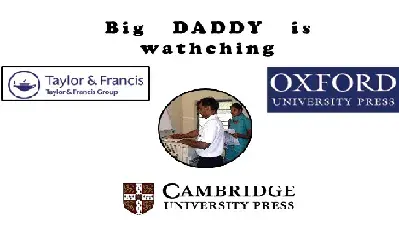
Both students and teachers raised alarms and protests against the petition filed by the publication houses contending that prohibition on photocopying would be a great loss as all sections of student could not afford to buy original books or the whole book to read a particular chapter. Even a “Campaign to Save DSchool Photocopy Shop” was launched on a social networking site.
From the written statement of the Delhi University, the learned Single Judge note that “The defendant no. 2 (i.e. DU) has taken a stand that whatever they were earlier doing was under the bona fide impression with a view to achieve their goal in the larger interest of the students and in any case, they have no intention to breach any such law by making re-production of the copies or to commit any kind of violation of copy right” and held that the photocopier had no right to compile the course packs and books/articles published by plaintiff and more so when the University has taken a stand that that they had no intention to breach any law by making such reproductions as complained of by the plaintiff in the present suit. The Rameshwari Photocopy Service was accordingly restrained from making or selling course packs and also reproducing the plaintiff’s publication or substantial portion thereof by compiling the same either in a book form or in the form of a course pack. But that was not it…the twist in the tail was DU getting aggrieved by “its alleged admission” [as produced above] being recorded in the order. DU then approached the appellate bench of the Delhi High Court. It is altogether a different story that the appeal was dismissed by the bench comprising Justice Pradeep Nandrajog and Justice Manmohan Singh and DU was directed to return to the single judge and clarify the scope of their alleged admission/undertaking.
Fareed Zakaria penalized for plagiarism: suspended from his coveted job at Time magazine and CNN
Fareed Zakaria a distinguished journalist, a commentator and author of several non-fiction literature focusing on global issues related to international relationship, trade and American foreign policy was suspended briefly from his job at Time magazine and CNN, when a conservative website NewsBuster reported close similarities of Zakaria column in Time magazine with an essay by Jill Lepore .
It was reported that several paragraphs of Fareed Zakari article titled “The Case for Gun Control” in myTime column regarding the killing at gurudwara in Wisconsin, were found to be narrowly similar to the essay titled “Battleground America,” on the same subject written by Harvard University history Professor, Jill Lepore, that has been published in April 2012 in The NewYorker, without attributed excerpts of the copyright work.
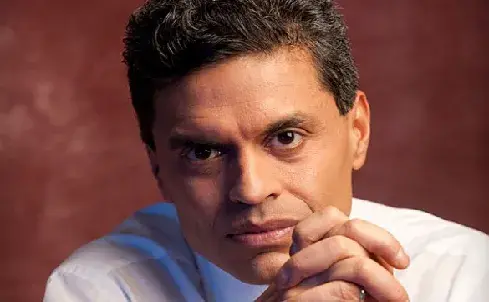
Zakaira was honored with Padma Bhushan award, the third highest civilian award of Republic of India, in 2010 for his remarkable contribution in the field of Journalism.
Zakaria later issued a statement stating “Media reporters have pointed out those paragraphs in my Time column this week bear close similarities to paragraphs in Jill Lepore’s essay in the April 23 issue of The New Yorker. They are right. I made a terrible mistake. It is a serious lapse and one that is entirely my fault. I apologize unreservedly to her, to my editors at Time, and to my readers.”
Both CNN and Time after reviewing the allegations of plagiarism on Zakaria, termed this all as a “journalistic lapse” and an unintentional error and announced the revoke of his suspension with a resume of his column in Time and talk show on CNN.
“Jo tera hai…who mera hai..” (…All thine are mine)
Imitation (read inspiration) is the best form of flattery. Some people seem to have taken that too seriously. We present some of the sincerest inspirations of 2012.

Though these movies were not released in 2012, we couldn’t help praising these remarkable inspirations.
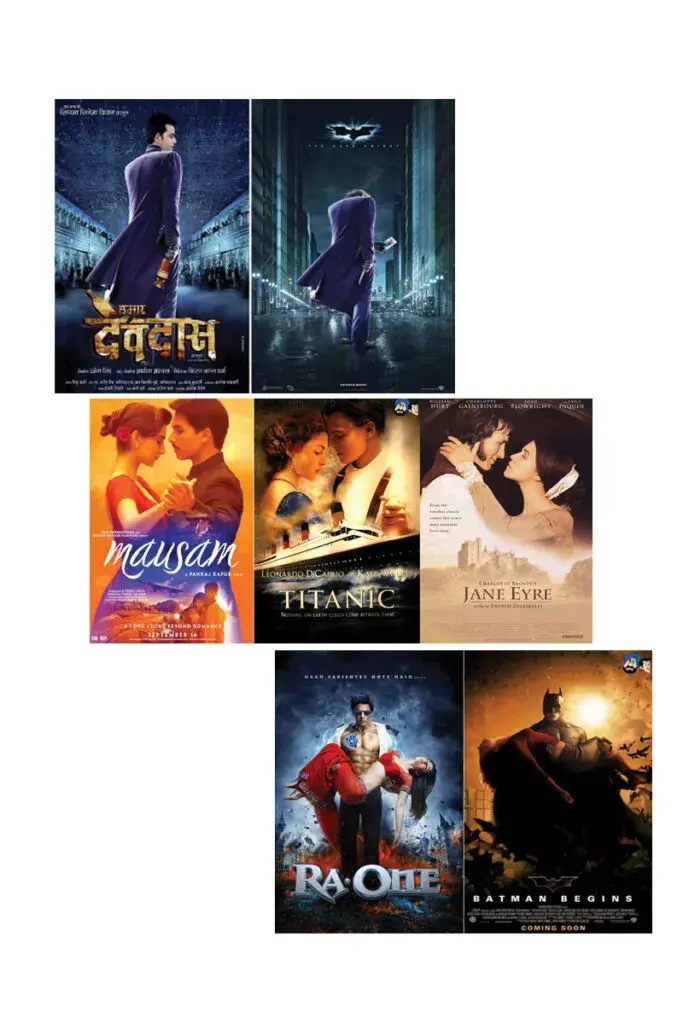
TRADEMARKS
Importation defined and then redefined…
“The interesting issue, in the field of the Trade Mark law, which arises for consideration in the instant appeal, has an immense bearing on trade and commerce in India…” were the words of the Division Bench of the Delhi High Court in the case of Samsung Electronics Co. Ltd. & Anr. v. Kapil Wadhwa & Ors, where the principle of international exhaustion under the Trade Marks Act, 1999 was recognized by the Court.
The contentions started when Samsung initiated proceedings against Kapid Wadhwa & Ors asserting that they were distributing, retailing and selling grey market printers in India without proper Maximum Retail Price stickers and that the products were not earmarked to be sold in the Indian market. Samsung averred that the defendants were neither the authorized sellers of the Samsung products nor they had the permission or the authorization to sell their products in India. The price quoted by the grey market goods were also much below the price of the printers ordinarily sold in the Indian market by Samsung. Samsung further alleged that by way of parallel imports, the defendants were infringing their trademark in as much as the importation has been caused without the consent.
The learned Judge of the High Court had then held that the relevant sections of the Trade Mark Act makes it amply clear that the act of importing or exporting goods (whether genuine or non genuine) under the mark is treated to be as use of a registered trademark and therefore, importation in clear and explicit terms is an infringement of the trademark. It was also held that the act of importation without the consent of the registered proprietor amounts to an infringement and that it negates the concept of free flow of goods in the world market as the Trademark Act put barriers on importation and that the “lawful acquisition” can only be within the domestic market where the trademark is registered and not from elsewhere.
The defendants thereafter moved to the Division Bench of the High Court. The Division Bench held that there was no law which stipulates that goods sold under a trade mark can be lawfully acquired only in the country where the trade mark is registered. In fact, the legal position is to the contrary. It was further held that lawful acquisition of goods would mean the lawful acquisition thereof as per the laws of that country pertaining to sale and purchase of goods. Trade Mark Law is not to regulate the sale and purchase of goods. It is to control the use of registered trademarks. The Division Bench concluded that ‘the market’ contemplated by Section 30(3) of the Trade Marks Act 1999 is the international market i.e. that the legislation in India adopts the Principle of International Exhaustion of Rights.
The Division Bench while partially setting aside the order of the Single Judge directed the Appellants (Kapil Wadhwa & Ors) to prominently display in their showrooms that the products sold were imported and that Samsung do not provide any warranty or after sale services over such products.
Wait for it…the story has another dimension – The DELL angle completes the Triangle
While Kapil Wadhwa and Samsung were fighting a legal battle over the definition of “Parallel Importation” and International/National exhaustion of rights, the “Office of Commissioner of Customs” allowed parallel importation of “Dell Computers” in India..
In the instant case three Indian importers, by the names of Venktron Digital Systems Pvt. Ltd., M/s Sapphire Micro System & Momentum Technologies Inc. Pvt. Ltd. were importing about 450-500 Dell laptop computers into India. During the course of action of clearing the consignment at Customs, an alert was registered under the IPR Import Rules for Possible Trade Mark Infringement, due to a prior registration, under the Intellectual Property Rights (Imported Goods) Enforcement Rules, 2007 for the mark ‘Dell’, by Dell India Pvt. Ltd. The imported goods were seized for two months.
The Commissioner of Custom held that Notification 51/2010-Cus (N.T.) issued under powers conferred by section 11 of the Customs Act, 1962, in relation to the Trademarks Act 1999 prohibits the import of only those goods where False Trademarks or False Trade Description have been applied. As in the said case the imported goods were found to be genuine, their importation was not prohibited. The Commissioner also observed that since the consignment was held up for almost two months due to the deliberate insistence of infringement of IPR the importers had suffered heavy financial loss and mental agony and therefore ordered that the demurrage & warehousing charges on the goods were to be recovered from the Complainant. For the complainant it sure was having the cake and eating it too.
And there was more to come… the Customs Board issued notification clarifying the issue of parallel imports The Central Board of Customs & Excise issued a circular no. 13/2012-Customs dated May 8, 2012, for all its officers, on the enforcement of Intellectual Property Rights (IPR) on imported goods and clarification on the issue of parallel imports. The circular referred previous notifications of the Custom Department reiterating prohibitions against infringement of trade marks on import of goods intended for sale or use in India attracting the provisions of IPR (Imported Goods) Enforcement Rules, 2007, would be applicable to imported goods having applied thereto a “false trade mark” and/or “false trade description”.
Here Today Gone Tomorrow…Ayur… Amul… Kellogg’s…different brands, same story Kellogg’s Tale
In the instant case Pops Food Products (P) Ltd. had filed three trademark applications for its goods and claimed to have acquired goodwill for itself through usage and advertisement of their mark for a long period of time. Kellogg Company later intimated Pops Food of it being the proprietor of trademark POPS in relation to cereal derived breakfast food and of its intention to oppose their registration. Pops Food in turn sought rectification of Kellogg’s mark on the ground that Kellogg had not made any use of the said mark nor do they have any bonafide intention of using it. Pops Food contended that the trademark was liable to be revoked on the ground of non -use.
Kellogg on the other hand contended that it has been continuously using the mark internationally since its adoption in 1941 (by way of use of registered trademarks like CORN POPS, COCO POPS, POP TARTS) and although the trademark was not yet used in India, it had gained a trans-border reputation and goodwill owing to Indians traveling abroad and it subsequently intended to use the mark in India.
Kellogg’s contentions however could not impress the Board and the trademark “Pops” was revoked as it was not being used by the multinational giant in India. The Board further noted that it did not find any bona fide intention of use of the mark by Kellogg within India, given how no step had been taken towards the same within the 22 years i.e. 1989 to 2011 i.e. since the date on which the Kellogg had registered the said trade mark.
Ayur lost its monopoly:
IPAB ordered for removal of not one or two, but five registered trademarks of “Ayur”. The Board held that the word “AYUR” is associated with ‘Ayurveda’ and ‘healthy life’ and thus restricted its appropriation by anyone.
The suit before IPAB was brought by the multinational giant Hindustan Unilever Limited (HUL), after Three-N-Products (P) Ltd. (owner of the trademark Ayur) initiated proceedings against them for use of the trademark “LEVER AYUSH” in the District Court of Ernakulam. Three-N-Products had contended that “LEVER AYUSH” was deceptively similar to their impugned mark “AYUR”. Thereupon HUL sought for rectification of “AYUR” stating that it was a commonly used word, which is derivative of the word AYURVEDA, a 5000 year old knowledge of medicine.
Justice Sridevan and S. Usha noted that the respondent had opposed AURA, SUPER MAYUR, AZUR, AURI, MAYOR, AYUTKA, AYURUH, AYERA, AVIR, AURUOLA, A-YOUR, AYUS, AYUSH, and that it was like as if no one can use the letters “AUR” in their mark or in conjunction with each other or with other letters without being dragged into litigation by the respondent. They further remarked that they have not come across a case where public interest has ever loomed larger and that even a small trader somewhere aspiring to sell modestly some Ayurvedic product will be pounced upon by this respondent who had obtained registration of “AYUR” for admittedly non-ayurvedic product.
It was held that since respondent had admitted that “AYUR” means ‘life’, their contention that “AYUR” was an invented word was unacceptable; and since the respondent claims that the mark was used for non-ayurvedic product, the use of “AYUR” was deceptive since the ordinary consumer will think it is an ayurvedic product. The Board finally held that the mark was likely to cause confusion and deception; it could not pass either the test of Section 11 nor the test of Section 9 of the Trademark Act; and public interest would be harmed if this mark remained in the register thereby preventing other persons in our country access to a common Indian word denoting an ancient system of medicine.
Utterly…Butterly…but not so delicious decision: Amul lost Trix
In 2005, General Mill applied for the registration of “TRIX” with the Trademark Registry which was refused on the ground that the said mark was already registered by Amul and that the General Mill’s trade mark was “proposed to be used” against which an appeal has been preferred and the same was pending. General Mills filed the application for rectification with the IPAB mainly based on the ground of non use. The Board noted that there had been sporadic intermittent use of the trade mark which and had rectified “TRIX” trademark filed by Amul in class 30 giving directions to the Registrar to cancel the said trademark registered under no. 330224. Amul then moved to the Gujarat High Court against the order of IPAB.
The High Court upheld IPAB’s decision and observed that Amul had not used the trade mark commercially at any point of time other than 10 months in the year 1986. It further noted that when a trade mark is registered, it confers a valuable right. It seeks to distinguish the goods made by one person to those made by any other. A person, therefore, who does not have any bona fide intention to use the trademark, is not expected to get his product registered so as to prevent any other person from using the same. Amul’s petition was subsequently dismissed.
Some stories had happy ending as well… Victory for XEROX
The IPAB rejected four out of seven rectification application filed against the registration of “Xerox” as a trademark on the grounds of mark becoming generic. B.V. Elango Himachalapathy, owner of photocopying shop initiated rectification proceedings in the Appellate Board after a suit was filed by Xerox Corporation against it in 2004. Elango contended that the word “XEROX” was now used as a common word and has become synonymous with photocopying thus has come to be used in a generic sense, lost its distinctiveness and by acquiescence has fallen into the public domain.
Justice Prabha Sridevan noted that the marks in respect of which the rectification applications were filed had been periodically renewed, without any objection or opposition by anyone and that at least from 2003, the Xerox had begun to aggressively protect its mark by campaigning with advertisements like ‘If you use Xerox the way you use Zipper, our Trade mark could be left wide open” and “If you use Xerox the way you use Aspirin, we get a headache”.
IPAB noted that though the public had been using the word Xerox in a loose manner, it clearly knew that the owner of the trade mark was Xerox Corporation and that Xerox has acted just in time to save its mark losing its life. It further went on to observe that the disputed trademarks have been on the Register for a long time and had been renewed periodically and put in use continuously. Further the competitors knew of the existence of the mark and had they been hampered in their business by the continuance of Xerox in the register, they would have been the first to protest.
The Board therefore held that “…But we find the long continuous existence on the register and the public acceptance of the trademark rights when pointed out are factors which weigh with us in our exercise of discretion.”
GEOGRAPHICAL INDICATIONS
Having one’s laddu and eating it too!!! – Petition for rectification of Laddu dismissed by GI Registry
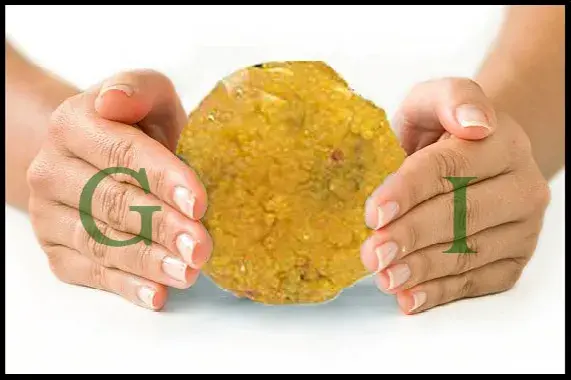
Mr. R.S. Praveen Raj, scientist with National institute for interdisciplinary science and technology (NIIST-CSIR) had filed the rectification application alleging that granting of GI tag for ‘Tirupathi Laddu’ (GI-121) was in contravention to the relevant sections and provisions of the Indian GI Act. He had alleged that alleged that no industrial purpose was served by the grant and granting monopoly to a single producer would defeat the fortitude of Geographical Indications. He went on to claim that other religious entities would also claim rights over their products demonstrating this indication as a precedent, further he alleged that granting GI status to Tirupathi Laddu was a grave injustice to Articles 25 and 26 of the Constitution of India.
Tirumala Tirupathi Devasthanam (the trust that manages operations and finances of Tirumala Venkateswara Temple) responded by stating that Praveen Raj had no locus standii to institute the proceedings and that he was in no way offended by the registration also he never objected when the matter was publicized in the GI Journal (prior to registration). The Registry later sent notice both to TTD and Praveen Raj for final hearing. Interestingly Praveen Raj sent an e-mail to the Registry stating that due to some practical difficulties, he would not be able to attend the hearing and that the matter may be heard in his absence.
The GI Registry held that Indian Constitutional law allows the religious institutions to acquire movable and immovable property and nothing prejudice was happened by granting GI tag for Tirupathi Laddu. Since Praveen Raj failed to turn up for hearing it was held that he failed to prove the claim as alleged in his rectification application. The Registrar further went on to note that the applicant had wasted the precious time of the tribunal by filing frivolous, frolicsome and playful application and misused his official status and emblem of his employer (NIIST-CSIR) for shameful publicity and that it shows the reckless, irresponsible, immature attitude of the rectification applicant. The tribunal also imposed a fine of Rs. 10,000/- (Rs. Ten thousand only) on Praveen Raj and dismissed the rectification application.
IPAB DIRECTS REGISTRY TO REVIEW THE GOLD RING’S GI
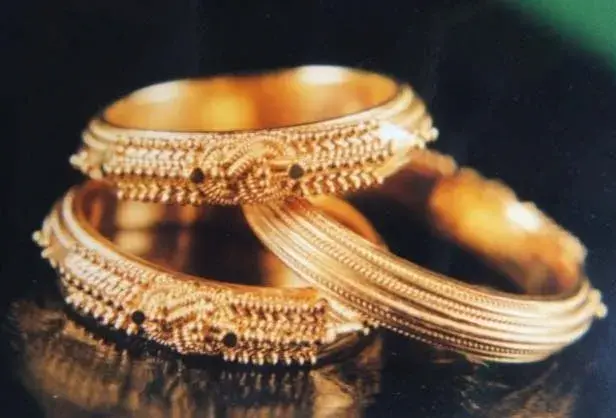
The IPAB had set aside the grant of Geographical Indication (GI) registration to the ‘Payyannur Pavithra. The Payyanur Pavithra Mothiram made of gold and silver is a uniquely crafted ring by the artisans in Payyannur, Kannur district, Kerala. It was granted the GI tag in 2009 (in the name of society — Payyannur Pavitra Ring Artisans and Development Society, which claimed to be a registered association of the producers and traders of the ring). Against this registration, Subhash Jewellery, Payyannur, represented by its proprietor C.V. Dayanandan, filed the present appeal before the IPAB contending that the society was not a legal entity and its members were not even artisans, but were businessmen.
Thereafter IPAB had set aside the registration observing that “A mere claim that the society is called Payyannur Pavithra Ring Artisans and Development Society will not suffice. There should be evidence to show that the producers are desirous of coming together to protect the mark and that is clearly absent.” The Board sent it back to the GI Registrar and told to him to decide the case after sending notice to all parties. He was directed to take a decision within six months.
FOREIGN DIRECT INVESTMENTS
Foreign Direct Investments, Retail Trade and India
Stiff resistance, both from its allies and from opposition, could not prevent the UPA government from finally relaxing the FDI policy by allowing 51 percent foreign investment in multi-brand retailing and 100 percent in single brand. The resentment and reservations towards opening up of retail sector did arise from fear of job losses, procurement from international market, competition and loss of entrepreneurial opportunities.
The Government has however laid down several terms and conditions including allowance of FDI in multi-brand retail only in towns which have a population of more than one million, at least 30% of the value of procurement of manufactured processed products purchased to be sourced from Indian ‘small industries’, the minimum amount to be brought in by the foreign player to be US$ 100 million; 50 per cent of the total FDI brought in to be invested in back-end infrastructure such as processing, logistics, warehousing and improvements in manufacturing. FDI in multi-brand retail trading in the form of e-commerce is however still not permissible. Further the State Governments /Union Territories would be free to take their own decisions in regard to implementation of the policy.
It is worth mentioning that in case of single brand retailing, government had laid down the requirement of mandatory sourcing of at-least 30% of the value of products sold to be done from Indian ‘small industries/ village and cottage industries, artisans and craftsmen (in case of proposals involving FDI beyond 51%). Later Swedish retailer IKEA, which planned to invest Rs 10,500 crore in India, had sought relaxations in the said clause. The government obliged by relaxing the policy on condition that any firm seeking waiver of the mandatory 30 percent local sourcing norms would have to set up a manufacturing facility in the country.
After much opposition the Government finally managed to win the votes of both the Rajya Sabha and the Lok Sabha.
The bold reforms of the government has opened gates for global retail giants WalMart, Carrefour, Ikea, Tesco to open retail stores in India under their own brands. WalMart, at present, has a 50:50 cash and carry joint venture with Bharti Group while Tesco has a tie-up with the Tata group and supports the Indian firm in the running of Star Bazaar chain of retail outlets.
IP Connect’s Views
The government’s decision of allowing 100% FDI in single brand retail and 51% in Multi-Brand retailing is expected to benefit not only the foreign retailer and the Indian partner but also the end-consumers. While foreign companies can gain access to local market knowledge the Indian companies will benefit from the global best management practices, designs and technological knowhow and the consumer would have the choice to by products. India will also significantly flourish in terms of quality standards and consumer expectations, since the inflow of FDI in retail sector is bound to pull up the quality standards and cost-competitiveness of Indian producers in all the segments.
NEWS FROM THE IPO, IPAB AND DIPP
- CGPDTM issued a public notice stating that with the help of concerned proprietors and trade mark agents, most of the missing files in relation to registered trademarks in the various offices of the Trade Marks Registry (TMR) were reconstituted and records were updated in the system. It is further stated that the number of missing registered TM files stood at 47. (April 25, 2011).
- The list of International Non-Proprietary Names (INNs) as declared by the World Health Organization (WHO) was published enlisting 8151 pharmaceutical substances. [Section 13 of the Trademarks Act provides that international non-proprietary names or deceptively similar names shall not be registered as trademarks.] (February 7, 2012)
- A new version of Indian Patent Information Retrieval System was launched by the Indian Patent Office. The new version has been improved over previous so as to provide increased no. of fields, combination of Search fields, inclusion of operators, distinct (non-repetitive) results and detailed information of Patents (01/01/1995 onwards). (24 April, 2012)
- The Intellectual Property Appellate Board (IPAB) published its Annual Report for the year 2011. The Report delineated IPAB’s activities throughout the preceding year including details of announcements, instructions and guidelines issued by it. (April 26, 2012)
- As many as 13 office orders were issued by the CGPDTM regarding reorganization of the functioning of the Trade Marks Registry with directions for constitution and reconstitution of several departments/sections and defining their functions and responsibilities. Directions to examiner to examine at least 50 applications per day, prohibition of amendments seeking substantial alteration in the trademark application and electronic generation of O-3 notices in cases where renewal was due to expire were some of the major guidelines. (June 8, 2012)
- Indian Patent Office (IPO) in coordination with the International Bureau (IB) had acquired online access to the PCT International Applications and related documents available with IB. This online accession of documents intended to simplify the process of filing the PCT National Phase Applications in India, as applicants were no longer required to file multiple copies of the documents already available with IB. IPO would utilize such documents accessed electronically from IB. (July 2, 2012)
- Indian Intellectual Property office had invited stakeholders’ comments on the Industrial Design Law. The Standing Committee on the Law of Trademarks, Industrial Designs and Geographical Indications (SCT) had considered a set of draft provisions on industrial design law and practices at its twenty-fifth session, held in Geneva in 2011. The Secretariat was then requested to prepare a revised working document for consideration at the twenty-sixth session of the SCT reflecting all comments made at the previous session and highlighting the issues that needed more discussion. Subsequently two working documents were prepared by the Secretariat, one containing the draft Articles on industrial design law and practice, i.e. provisions of a general nature and the other containing draft Regulations, which further elaborate upon certain details of a technical and administrative nature raised in a number of the draft Articles. (July 18, 2012)
- The Union Minister of Commerce, Industry and Textiles, Shri Anand Sharma inaugurated the National Institute of Intellectual Property Management (NIIPM) building at Nagpur and named it “Rajiv Gandhi National Institute of Intellectual Property Management” on July 21, 2012. The new NIIPM logo was also launched on this occasion. (July 20, 2012)
- IPO made available the list of Patent Applications related to Traditional Knowledge. The fifty two pages long list delineated the particulars of Application Number, Title, Applicant’s name and Publication data among other details of Seven Hundred and Sixty Five (765) applications. (July 25, 2012)
- An online tool enabling the applicants, registered proprietor or their agents to make online request for correction of clerical or typographical errors in the Trade Marks records was launched by the registry. The online tool also facilitated the applicants/ agents to upload supporting documents to substantiate their request for amendment in any data entry of the application for registration of trademarks or in the records of registered trademarks. (September 17, 2012)
- The Department of Industrial Policy and Promotion notified amendment of Rule 110 of the Patents Act by the Central Government. The said rule pertains to particulars of the qualifying examination for patent agents. While the qualifying examination earlier required the candidate to score a minimum of fifty marks (out of 100) in each of the two papers on Patent Act and Rules and Drafting and interpretation of patents specification and Viva Voce and an aggregate of sixty per cent of the total marks to pass the examination, as per the amended rule the marks for Viva Voce was reduced to 50 from 100. (September 25, 2012)
- The Office of Controller General of Patents, Designs and Trademarks (CGPDTM) initiated a special drive for disposal of those opposition/rectification matters where the opponents/applicants have withdrawn their oppositions/applications respectively either suo-moto or on the basis of settlement between parties to the proceedings. This also included the cases where application seeking rectification of the Register of trademarks by cancellation or variation of registered trademarks were filed but were later withdrawn.( November 07, 2012)
- CGPDTM considers trademarks Polo (label with device of polo player) and GE monogram as well-known Trademarks within the meaning of Section 11 (8) of the Trade Marks Act 1999. (November 16, 2012)
- Patent Office issued guidelines to be complied by all Examiners and Controllers while processing patent applications relating to Traditional Knowledge and/or biological materials. (November 22, 2012)
- Patent Office published the list of of 523 application Patent Applications (Domestic) related to Ayurvedic and Herbal based medicines filed as published up to November 30, 2012. (December 14, 2012)
- A Comprehensive Online Filing Services for Patents was launched by the IPO upgrading the existing E-filing system to include the facility to file all the prescribed forms, besides application for grant of patent, along with prescribed fees for registration of Patents. The existing E-filing services to be discontinued by the IPO with effect from 12:00 hours IST on 31.12.2012.( December 15, 2012)
- The draft “Guidelines for Examination of Biotechnology Applications” was made available to the public. The said guidelines intended to bring in uniform practice for the examination of applications related to relevant subject matter. The Patent Office has also invited comments on the same, which could be submitted by January 11, 2013. (December 19, 2012)
- The Department of Industrial Policy & Promotion (DIPP) released the first draft of National IP Strategy/Policy and had invited comments of all stakeholders with the intention of preparing a policy statement on the steps that the Government needs to take to promote creation of IP and encourage its utilization.
What we did in twenty twelve – S. S. Rana & Co.’s contribution in IPR sensitization:
Essay Writing Competition on the occasion of World IP Day (April 26, 2012) and Creatio- A design competition on the occasion of World Industrial Design Day (June 29, 2012):
In order to give young students an opportunity to understand the role played by intellectual property rights in protecting the work and creation of human mind and intellect & to raise awareness on IP Rights India, Vidya Darshan Rana Charitable Trust in collaboration with S.S. Rana & Co. had organized All India Essay Writing Competition on IP relevant theme. The competition aimed to provide a platform to the students to share their views and would enable them as well as their college in getting national recognition.
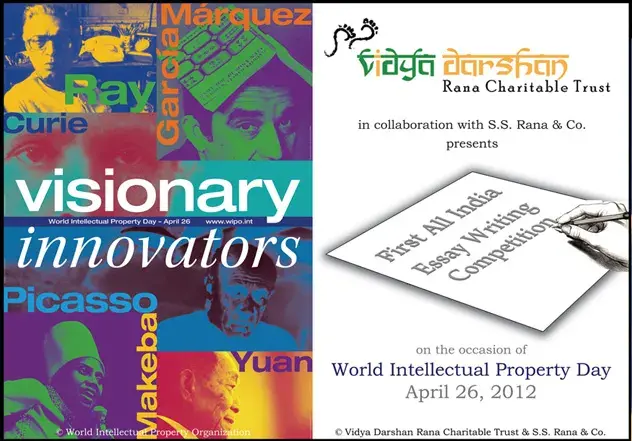
The competition was hotly contest with several students participating from across India. It was also acknowledged by the World Intellectual Property Organization. The winners of this competition received cash prize and certificates.
To celebrate the fifth anniversary of World Industrial Design Day, Vidya Darshan Rana Charitable Trust in alliance with S.S. Rana & Co. organized “Creatio” the First All India National Design Competition.
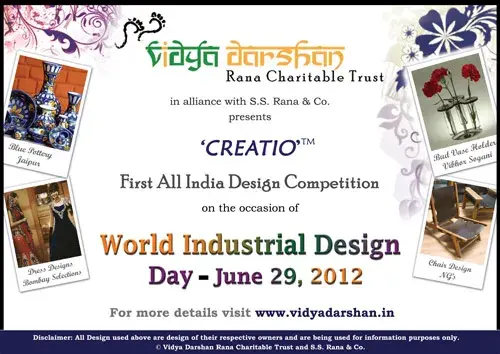
“Creatio” was organized with the aim to raise Intellectual Property awareness in India and help the grassroots innovators, designers, artisans and creators to realize their true potential by providing a national platform to them. The competition was recognized and acknowledged by International Society for Complexity, Information, and Design (ICSID). The competition was also covered in Indian Express a leading Indian English daily.
- Delivered a lecture on “on “Trademark & its Importance in Marketing of Goods” on March 19, 2012 in the seminar organized by Intellectual Property Facilitation Centre, Council of Science and Technology in Khurja, Uttar Pradesh.
- Shared his views on “Trademark and its Protection” and “Different aspects of Industrial Design” in the seminar in the seminar organized by Confederation of Indian Industries in collaboration with National Innovation Council (NIC) for Innovation Clusters –Clusters identified by NIC, headed by Sam Pitroda in Ernakulam Kerala on March 23, 2012.
- He was the eminent speakers in the seminar organized by the Centre for Science and Technology of the Non-Aligned and Other Developing Countries (NAM S&T Centre) in Manesar on July 17, 2012. He shared his views on the “Trademarks and Business Decisions in the Contemporary Context”.
- He was invited to deliver lecture on the Trademark Law and Practices at the National Institute of Intellectual Property Management (NIIPM) Nagpur to Examiners of Patent & Designs on July 26, 2012.
- He was the eminent speakers in the workshop organized by the Confederation of Indian Industry (CII) in collaboration with Defense Research and Development organization (DRDO) in New Delhi on November 20, 2012. He shared his views on “Enforcing Copyright & Trademarks: Best Practices with respect to IT and Cyberspace”.
- Delivered presentation on the Industrial Designs, in the conclave organized by Federation of Indian Chambers of Commerce and Industry in New Delhi on November 29, 2012. The theme of his presentation was “Making Difference Through Design – Business & Social Innovation”.
- Delivered presentation on Copyright Management and issues in space technologies, in the Seminar/Training at SAC Ahmadabad on December 20-21, 2012. The Seminar was organized by SAC/ISRO, Ahmadabad.
Other contributions by the firm
- Ms. Anisha Rana Associate Trademark Attorney shared her views on “Trademarks and its importance in marketing of Goods” in the seminar organized by Intellectual Property Facilitation Centre (IPFC), Council of Science and Technology in Agra on July 25, 2012.
- Ms. Rishu Srivastava, Patent Agent and Ms. Bhawna Sharma’s, Patent Researcher,paper on Digital Rights Management was selected and published by FICCI. The paper was distributed amongst all the participants of the “PubliCon – 2012” conference organized by FICCI in New Delhi on September 2-3, 2012.
- Senior Associate-Advocate Ms. Lucy Rana and Ms. Rishu Srivastava submitted feedback on the draft National IPR Strategy as prepared by the Sectoral Innovation Council on IPR, in response to the discussion paper issued by DIPP(November 8, 2012).
WINNER OF IPCONNECT NEWS OF 2K12
IPConnect’s Views
With third rank in terms of volume of production and fourteenth in terms of value, Indian pharmaceutical sector is recognized as the leading global player in international market. Despite of this India has a large unmet domestic demand for critical medicines. The prevalence of cancer is estimated to be about 205 million people, with about 8,00,000 new infections every year and 5,50,000 death occurring each year due to cancer. The Parliamentary Standing Committee on Health and Family Welfare had also raised issue on the availability and accessibility of drugs to poor in the country in its forty fifth report on “Issues Relating to the Availability of Generic, Generic Branded and Branded medicines…” In the light of above facts and considering that generic medicines accounts for more than 90 percent of the drug sales the Controller’s, IPAB’s and Court’s decisions on pharma patents sure has farfetched consequences. It may lead to lowering of drug prices of the patented drug or better availability, but may also prove to be a major setback for the drug discovery and development programs in India and abroad and as a deterrent factor for innovators and MNCs that are contemplating investment in intellectual property in India. This may be quite ironical for a country that has declared the current decade as the “Decade of Innovation”.
Though the Copyright issue regarding photocopy material and the national/international exhaustion of trademark rights gave stiff competition to it but the winner of “IP Connect News of 2K12” is “India’s first compulsory license.”








